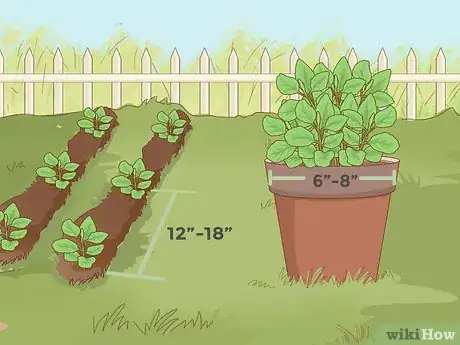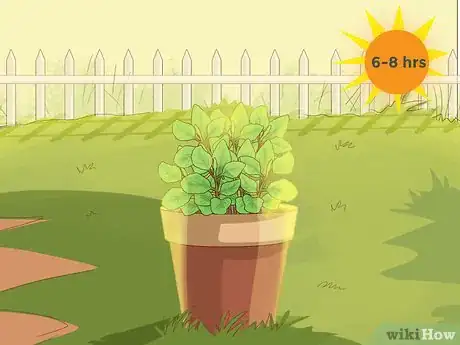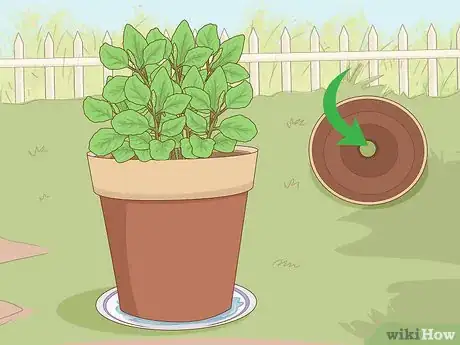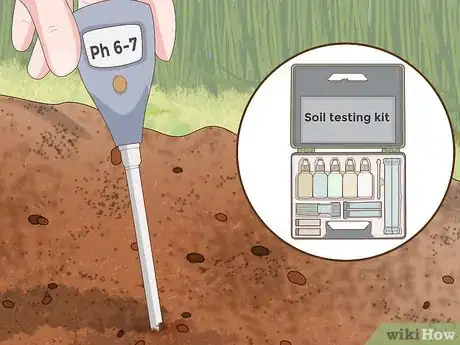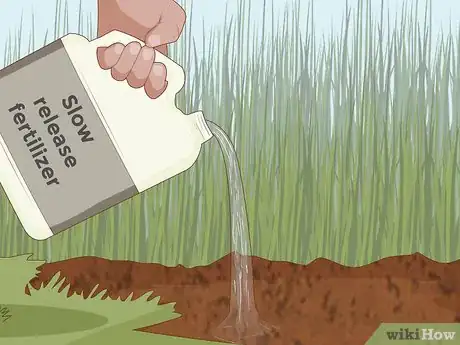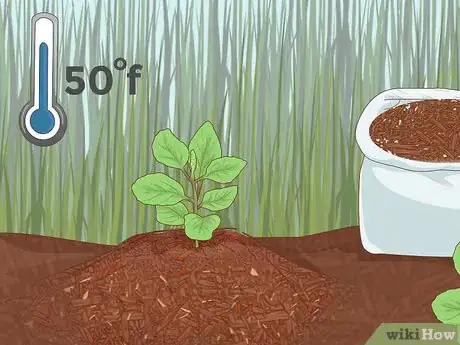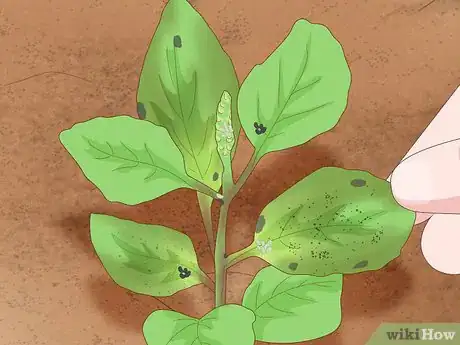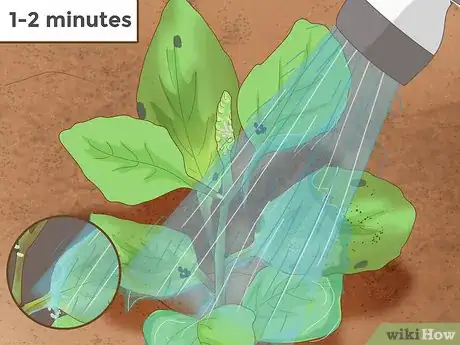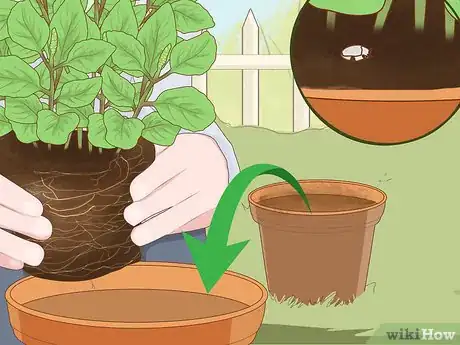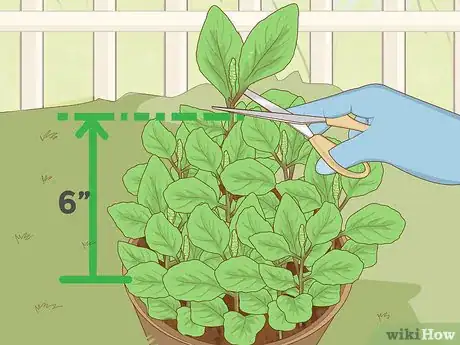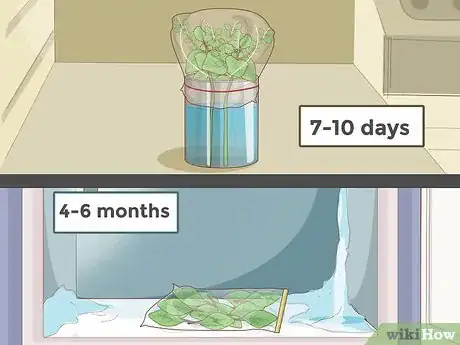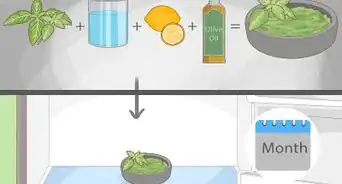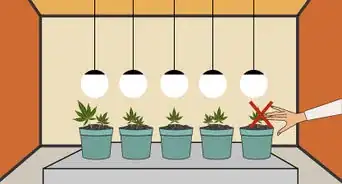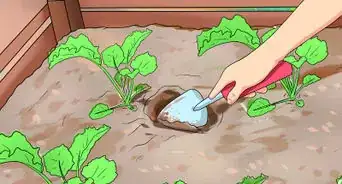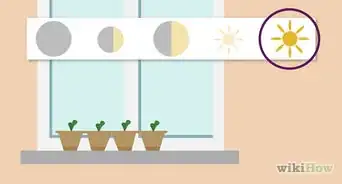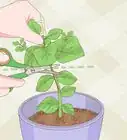This article was co-authored by Artemisia Nursery. Artemisia Nursery is a retail plant nursery in Northeast Los Angeles specializing in California native plants. Artemisia Nursery is a worker-owned small business with plans to become a worker-owned cooperative. In addition to California native plants, Artemisia Nursery offers a selection of succulents, heirloom veggie and herb starts, house plants, pottery, and gardening tools and supplies. Drawing on the knowledge of the founders, Artemisia Nursery also offers consultations, designs, and installations.
There are 7 references cited in this article, which can be found at the bottom of the page.
wikiHow marks an article as reader-approved once it receives enough positive feedback. In this case, 98% of readers who voted found the article helpful, earning it our reader-approved status.
This article has been viewed 28,402 times.
Once you have successfully cultivated your basil plant, you need to provide it with regular care to maintain it. Regardless of whether your basil plant is inside in a pot or outside in a soil bed, you'll need to follow a similar care regimen to keep your plant healthy. However, basil is an annual plant, so it will grow, flower, produce seeds, and die within a year, regardless of your level of care. Attending to the plant's basic needs, inspecting the leaves for pests, and regularly harvesting the leaves are just a few ways to properly care for your basil plant.
Steps
Attending to the Basic Needs
-
1Maintain a distance of 12–18 in (30–46 cm) between your basil plants. Don’t let your basil plants become so bushy that they begin to entangle with one another. This can cause shaded parts of your plants to wilt. Try to maintain the empty space between the plants to keep them healthy.[1]
- If needed, prune or replant large, sprawling basil plants to keep them from suffocating any smaller plants around it. This will also help create a healthy, balanced root system underneath the plant.
- If you notice that your potted basil is no longer growing, this may be because your plant has outgrown its pot. Replant basil plants that have grown too big for their current pot. House starter plants in a pot that is 6–8 in (15–20 cm) wide. Transfer mature or large basil plants to pots that are approximately, 9–12 in (23–30 cm) wide.[2]
-
2Make sure that your basil plant gets at least 6-8 hours of sunlight daily. Examine different spots in your house or yard throughout the day to better help you determine the best place for your basil plant. If a certain window in your house receives a lot of sunlight in the morning and very little in the afternoon, then that might not be the best place.[3]
- If you notice that the leaves on your basil plant look livelier during certain parts of the day than others, then this might be because it is not receiving a sufficient amount of sunlight throughout the day.
- Similarly, if the basil plant gets constant sunlight and the leaves wilt, consider moving the plant if it is potted, or putting up an umbrella or similar shade structure to keep the basil plant from shriveling and drying out.
Advertisement -
3Keep the soil around your basil moist by watering it every 1-2 days. Water the plant at the beginning or end of the day, and only if the soil seems to be drying out. Use your finger to gently poke the soil around the potted basil plant. If it feels mostly dry, then give the plant enough water to moisten the soil. Disperse the water around the entire soil surface to avoid over-watering it in a single spot.[4]
- The amount of water you give your basil plant largely depends on the size of the plant. Generally, only give your plant enough water to moisten the soil around the plant.
- Avoid directly watering the leaves of the basil plant. This can promote mold or fungal growth, and may even wilt the leaves if exposed to hot weather while still wet.
- Regular bouts of steady rain can easily overwater your basil plant. Consider investing in a protective cover to shield your basil plant from the rain. These can be purchased at your local nursery or hardware store, and online with major retailers.
-
4Promote proper water drainage by using a pot with holes in it. Some pots come with drainage holes already punched through, and others require to you punch the holes yourself. To create the holes, use a screwdriver and twist it through the bottom of the pot to avoid cracking it, or use a power drill to slowly perforate the outlined areas on the bottom of the pot.[5]
- If you need to punch holes in a pot that is already filled, enlist someone to help you lift and tip potted plant, so you can easily make the draining holes.
- Not having holes in the bottom of your pot, may lead your basil plant to develop mold or fungus.
Adjusting the Soil and Handling Weather Changes
-
1Test the pH level in your basil’s soil by using a pH testing kit. Basil thrives in soil that has a pH level of 6 or 7. If you find that your basil isn’t growing, it may be because the soil is too acidic (below 7) or alkaline (above 7). Purchase a pH testing kit in the gardening section of your local department store or online with major retailers.[6]
- Most testing kits will require you to mix a sample of your soil with distilled water, and then test the solution with a pH strip.
-
2Use compost and fertilizers to adjust the soil’s pH level as needed. Each product will affect the soil differently, so read the back of the packaging carefully. Don’t be afraid to ask a representative at a local gardening store what product will work best for your soil.[7]
- Typically, dolomite, quicklime, or wood ash will decrease the acidity of your soil. And the organic material, like pine needles, or sulfur will lessen the alkaline levels.
- After a large harvest of leaves, give your plant a boost by feeding it some liquid fertilizer. This will help stimulate its growth.
- Additionally, use an organic liquid or slow-release fertilizer to help cycle nutrients back into the depleted potting soil once a month. Follow the manufacturing instructions on the amount of fertilizer to use for your plant.[8]
-
3Layer the soil around outdoor basil with mulch to regulate the temperature. Since basil is a spring-summer herb, it grows best in temperatures higher than 50 °F (10 °C). Account for any temperature fluctuations by adding a layer of mulch on top of the basil bed.[9]
- Mulch will also deter weeds from growing inside of your bed of basil.
-
4Cover outdoor basil with a thin sheet to protect it from frosty temperatures. Stick 3 or 4 wooden dowels into the ground around your basil plants. Then, drape an old, thin sheet over the top of the dowels and your basil plant. Secure the sheet to the ground with weighted objects like rocks. This will help sudden drops in temperature from damaging the leaves of your basil.[10]
- For covering your basil plant long-term, invest in a more structured frost cover. These come in a variety of sizes and can be purchased at your local department store, local nursery, or online with major retailers.
- If your basil is in a pot outside, consider moving it inside during the winter months to protect it from the cold.
Dealing with Pests
-
1Check the basil leaves and soil regularly for bugs and infestation. Look for leaves that are perforated with small holes, or leaves that are missing large chunks. This is an indication that bugs are eating your plant. A handful of perforated leaves should not raise concern. If there are large areas of your plant that are affected, then you need to address the problem immediately.[11]
- This will most likely be more common for basil that is outside, rather than inside, but you should still check periodically.
-
2Treat a bug-infested plant by hosing it off with water. Use a hose with a nozzle to gently spray the plant off with cool water. Continue to spray the plant for 1-2 minutes, or until all visible bugs are removed. The water will drown any bugs present on the leaves. If you hose your plant off often, it will most likely deter any more bugs from bothering the plant.[12]
- Pests like spider mites, aphids, and Japanese beetles can generally be deterred by rising the plant off with water.
-
3Change the soil around your potted plant if it becomes infested with gnats. Don’t just check the leaves for pests; make sure to check the soil for infestation as well. If you notice that the surface of the soil around your potted basil is crawling with gnats, you will have to repot your plant.[13]
- Gnats are common indoor pests for potted plants and have a tendency to lay eggs in moist soil, which will compromise the nutrients the plant receives.
-
4Deter slugs from your outdoor basil by placing slug pellets in your yard. The instructions on how to use the pellets can vary between brands. Follow the manufacturing instructions on your particular package of pellets for how far to place them from your plant. Once placed, the pellets will help redirect the attention of the slugs away from your basil plant.[14]
- Purchase slug pellets in the garden section of your local department store or online through major retailers.
- If needed, use a hose with a nozzle to gently spray and remove any present slugs on your plant.
Harvesting the Basil Leaves
-
1Prune the top layer of leaves off stems that are 6–8 in (15–20 cm) tall. Use your fingers to regularly pluck the topmost layer of leaves on each basil stem.[15] Keeping the tops of the basil stems plucked will encourage the plant to grow new leaves and will limit the number of flowers produced.[16]
- Continue to regularly prune the leaves regardless of whether you use them.
-
2Prevent the basil from seeding by pinching off any visible flowers on the plant. Look for small white flowers along the tops of the stems of the basil plant. Use your fingers to pluck and discard the flower. Removing the flowers will keep the basil from seeding and promote the growth of your basil leaves.[17]
- Remove the flowers as you notice them or make it a bi-weekly routine.
-
3Use scissors to trim the stems of the basil plant for large harvests. On the stems that are at least 6 in (15 cm) tall, look for a point on the stem that has 2 large leaves. Use a small pair of scissors to cut the stem slightly above those 2 joining leaves. Continue to harvest the basil as needed.[18]
- Regular harvesting helps make the basil plant grow a rounded shape. Just make sure to not harvest more than 2/3 of the plant; otherwise, it will take longer for the basil to fill out again.
-
4Store excess harvested basil in a small vase with water or in the freezer. As your basil plant grows, it may begin to produce more than you can use. Consider placing the freshly cut stems in a small vase or cup with water, or even freezing it so you can enjoy the taste during the winter months.[19]
- If you are regularly eating the basil, then place the basil stems in a small vase or cup with water. This is a similar process of putting flowers in a vase. Cover the top of the basil with a plastic bag, and leave it on the counter at room temperature for 7-10 days.
- For long-term storage, rinse the basil leaves under cool water and allow them to dry completely. Then, place the leaves in a freezer bag, and store them in the freezer for 4-6 months.
- You can also use dried basil to season your food. Place your basil leaves in a food dehydrator to dry them out. Then, store the dried basil in an airtight container until you use it.
Expert Q&A
-
QuestionHow do you pick basil without killing the plant?
 Artemisia NurseryArtemisia Nursery is a retail plant nursery in Northeast Los Angeles specializing in California native plants. Artemisia Nursery is a worker-owned small business with plans to become a worker-owned cooperative. In addition to California native plants, Artemisia Nursery offers a selection of succulents, heirloom veggie and herb starts, house plants, pottery, and gardening tools and supplies. Drawing on the knowledge of the founders, Artemisia Nursery also offers consultations, designs, and installations.
Artemisia NurseryArtemisia Nursery is a retail plant nursery in Northeast Los Angeles specializing in California native plants. Artemisia Nursery is a worker-owned small business with plans to become a worker-owned cooperative. In addition to California native plants, Artemisia Nursery offers a selection of succulents, heirloom veggie and herb starts, house plants, pottery, and gardening tools and supplies. Drawing on the knowledge of the founders, Artemisia Nursery also offers consultations, designs, and installations.
Plant Nursery & Garden Shop Avoid removing the lower, older leaves or your basil plant will become thin and lanky.
Avoid removing the lower, older leaves or your basil plant will become thin and lanky.
Warnings
- Be careful not to over-water your basil plant, as this could cause mold or fungus to grow on the plant. Keep the soil around the plant moist, but do not constantly over-saturate it.[21]⧼thumbs_response⧽
References
- ↑ https://www.almanac.com/plant/basil
- ↑ https://www.plantopedia.com/cultivating-basil/
- ↑ https://offbeathome.com/how-to-grow-basil/
- ↑ https://www.almanac.com/plant/basil
- ↑ https://www.plantopedia.com/cultivating-basil/
- ↑ https://www.plantopedia.com/cultivating-basil/
- ↑ https://www.sunset.com/garden/garden-basics/acid-alkaline-soil-modifying-ph
- ↑ https://offbeathome.com/how-to-grow-basil/
- ↑ https://offbeathome.com/how-to-grow-basil/
- ↑ https://offbeathome.com/how-to-grow-basil/
- ↑ https://www.plantopedia.com/cultivating-basil/
- ↑ https://www.plantopedia.com/cultivating-basil/
- ↑ https://www.plantopedia.com/cultivating-basil/
- ↑ https://www.plantopedia.com/cultivating-basil/
- ↑ https://www.almanac.com/plant/basil
- ↑ Artemisia Nursery. Plant Nursery & Garden Shop. Expert Interview. 7 August 2020.
- ↑ https://balconygardenweb.com/basil-growing-tips/
- ↑ https://offbeathome.com/how-to-grow-basil/
- ↑ https://www.stilltasty.com/fooditems/index/16458
- ↑ https://www.almanac.com/plant/basil
- ↑ https://balconygardenweb.com/basil-growing-tips/
